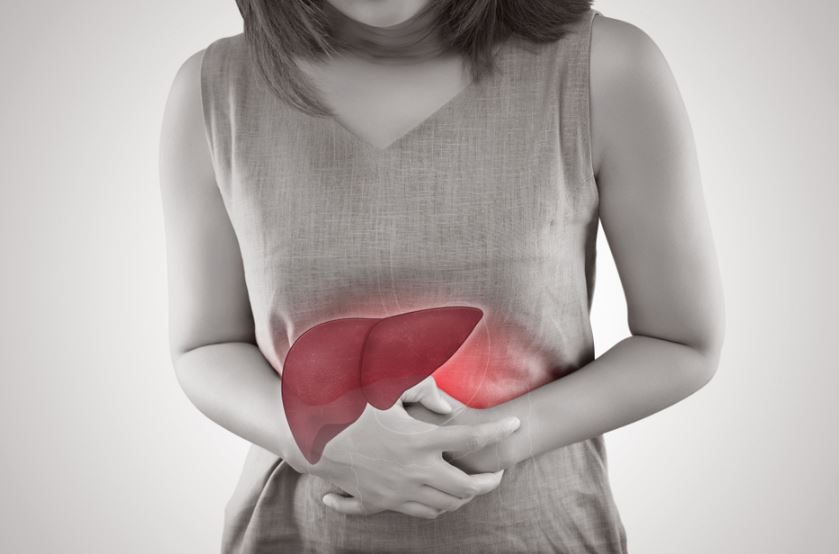Cancer : Everything about cancer + video
With the advancement of medical technology, cancer will be completely cured within a few years. You will learn about the types of cancer, new cancer treatment methods, and cancer causes in this article.
Lung Cancer- A Doctor Explains Everything You Need To Know :
Many people mistakenly believe that cancer is a disease, while a natural structure change causes it. The human body consists of millions of cells that form tissues such as muscles, bones, and skin. Cells proliferate in a regular and controlled manner, which leads to tissue growth and repair. The abnormal growth of cells is called a tumor, which can either be benign or malignant.
What Exactly is Breast Cancer? We Teach You Everything :
According to the World Health Organization, 30 percent of all cancers can be prevented. Only 5 to 10 percent of all cancers are caused by inherited genetic defects. Rest of cancers are related to environmental pollutants, infections, and lifestyle choices such as smoking, a poor diet, and inactivity. Tobacco use is the most significant risk factor worldwide for preventable cancer. Cancer cells are abnormal cells that reproduce rapidly and retain the ability to replicate and grow. As a result of this growth without cell control, tissue masses or tumors form.
Some tumors, such as malignant tumors, can spread from one place to another. Cancerous cells differ from normal cells. Cancer cells do not age biologically, retain their ability to divide, and do not respond to termination signals. We know cancer as a group of more than 100 different disease models. All of these diseases are characterized by abnormal cell growth in the body. When this growth occurs, the surrounding tissues are destroyed, and even in severe cases, these cells spread to other parts of the body and continue to grow there. We will now examine different types of cancerous tumors.
Benign tumors
Usually limited to a small part of the body, these tumors grow slowly and do not invade other tissues. Benign tumors do not shorten people’s lives and can be controlled with timely treatment, which is the only way to treat them surgically. Certain benign tumors can be fatal if they occur in certain locations and disrupt vital organs. But most benign tumors do not cause death.
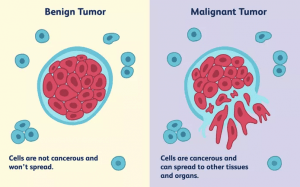
Malignant tumors
Benign tumors, on the other hand, are malignant because they begin to grow in a limited area but rapidly spread throughout the body. Even areas that are naturally responsible for the body’s defenses, like the immune system, may not be able to prevent split ends. Malignant cancerous tumors can lose their connection to tumor tissue and travel through the bloodstream to distant parts of the body. This causes another organ in the body to become infected with cancer. A metastasis occurs when cancer has progressed. Metastasis is one of the scariest things about cancer. In this stage, millions of infected cells separate from the tumor and enter the bloodstream. This makes cancer treatment more difficult. Cancer can spread to distant organs in three ways:
- Through tissue: Cancer attacks adjacent normal tissue.
- Through the lymphatic system: Cancer invades the lymphatic system and travels through the lymphatic vessels to other parts of the body.
- Cancer attacks the veins and capillaries and spreads to other parts of the body with the blood through the blood.
Most of these cells are destroyed by the immune system, but a few escape, survive and enter the tissue through the arteries. Therefore, infected cells can be destroyed in other parts of the body. In benign tumors, metastasis does not occur. The benign tumor usually does not come back after another treatment and is surgically removed. As breast cancer spreads to the bones, the bones’ cancer cells are breast cancer cells, and the disease is metastatic breast cancer, not bone cancer.
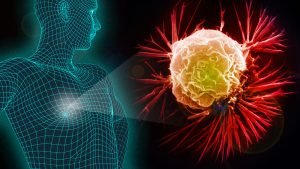
The figure above illustrates metastasis. The spread of cancer cells from one tissue to another is called metastasis. The term cancer is different depending on which organ the cancer cell is infected; For example, if the liver cell is infected, it is called liver cancer, and if it is a lung cell, it is called lung cancer. Imagine it is a blood cell, leukemia, etc. Sarcomas and carcinomas are two types of malignant cancers. Cancer can develop in any cell of the body, and there are different types of cancer. Cancers are often named after the organs, tissues, or cells that cause them. Skin cancer is the most common type of cancer. Sarcoma is a cancer that develops in muscle, bone, and soft tissues such as fat, blood vessels, arteries, tendons, and ligaments. Cancer that originates in the bone marrow cells that make up white blood cells is leukemia.
In contrast, lymphoma develops in white blood cells called lymphocytes. It affects both B and T cells. Cancer cells consume much more glucose than normal cells. Through cellular respiration, glucose is used to produce energy. Sugar enables cancer cells to divide rapidly. They do not rely solely on glycolysis for energy. Sugar is broken down to produce energy through glycolysis. The mitochondria of cancer cells provide the energy required for abnormal growth. As well as providing an enhanced energy source, mitochondria also make tumor cells more resistant to chemotherapy.
Cancer cells use more glucose to grow than other cells.

Our bodies are all made from the fertilization of sperm and eggs. After fertilization, several hundred cells are formed by cell division; our bodies are made up of these cell divisions. At full maturity, our bodies have trillions of cells. Our body divides its cells completely; even some are destroyed deliberately for our bodies to form properly. When the hands form during the embryonic period, some cells commit suicide in a process called cell fall to make space between the fingers. This cell division is essential for our development; however, the problem arises if the divisions get out of control. Cancer cells can hide from the immune system by hiding among healthy cells.
Cancer cell
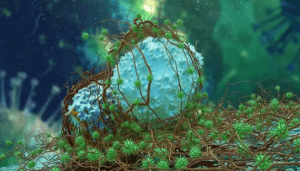
As an example, some tumors secrete proteins that are also secreted by lymph nodes. Using this protein, the tumor deforms its outer layer into something resembling lymphatic tissue. These tumors are not cancerous. As a result, the immune cells do not recognize the tumor as a harmful substance, so it grows and spreads uncontrollably throughout the body. Other cancer cells avoid chemotherapy by hiding in body cavities. Some leukemia cells hide in bone chambers to avoid treatment. Cancer occurs when the cells are no longer in control. When genes that control cell division, such as p53, mutate in a cell, the cell becomes cancerous and begins to divide uncontrollably.
This can be detected by our bodies, of course. Most mutated cells are killed by biological mechanisms in our body before they cause any problems. Since this process began, millions of years have passed, according to Charles Swanton of the Francis Creek Institute in England. However, this mechanism is not perfect. Only a small number of cells cannot be repaired by the repair mechanism. One of these unbridled cells can divide over time into a gland made up of thousands of cells. We are faced with a tumor when their number reaches billions. When the accumulation of cells becomes a tumor, the person is entirely cancerous.
All cancerous cells and the tumor must be removed. Even if a few cells remain, they may divide very quickly again to form new tumors. Cancer cells change to evade immune defenses, as well as to protect themselves from radiation and chemotherapy. This ability to deform is due to the inactivation of molecular switches called microRNAs. MicroRNAs are small molecules that regulate the expression of genes. The inactivation of specific microRNAs results in cancer cells acquiring the ability to deform. Cancer is characterized by a rapid increase in new blood vessels, or angiogenesis. The growth of tumors depends on the supply of nutrients from blood vessels.
Tumor growth stops when new blood vessels are prevented from forming. Cancer cells are not all the same. As a cancer cell divides, it may develop new genetic mutations that change its behavior. A cancer cell is evolving. When cells in a tumor mutate, they become genetically diverse.
Like humans, lions, frogs, and bacteria, cancer cells undergo genetic diversity over time. Tumors contain no two identical cells. Only cancerous cells remain in a tumor. There are evolution branches that build diversity, and diversity makes a tumor resistant to treatment.
Tumors are constantly changing genetically, which can make cancer so difficult to treat. To treat cancer, scientists are trying to open the door to evolution. Consider the evolution of a cancerous tumor as a tree with many branches. The base of the tree represents the mutations that activate the tumor; mutations that are shared by all tumor cells. A treatment that targets those early mutations should theoretically kill all tumor cells. This approach is now being used in some treatments. The problem with these treatments is that they do not work as well as we hoped, and the tumor usually resists them.
Types of cancer
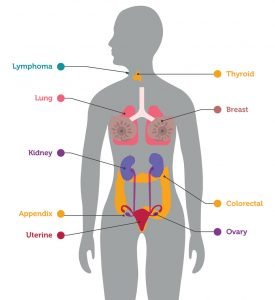
Swelling of the neck and face: Lung cancer can cause swelling of the face, neck, arms, and upper chest when a tumor puts pressure on a vein that runs from the head to the heart.
Muscle weakness: If you have difficulty doing things like picking up a large book or getting out of bed daily, it could be a cancer sign.
Decreased appetite: Loss of appetite is another symptom that can easily be associated with harmless problems; However, if this condition persists for a long time or is accompanied by other symptoms such as bloating, it needs immediate examination.
Skin changes: See your doctor as soon as possible when you notice a change in the size, shape, color of a mole, or other spots on your skin. New spots or those that look different are the most important symptoms of skin cancer.
Abnormal bleeding: If you have abnormal bleeding anywhere on the body, including the mouth, end of the intestine, vagina, or urethra, see a doctor right away. If you notice bleeding after a cesarean section or between periods, you may have uterine cancer.
A sudden weight loss can be a sign of stomach cancer, but it is challenging to diagnose this type of cancer in its early stages. Sometimes cancer cells break away from the original tissue they have formed and travel through the bloodstream or lymphatic system to other parts of the body and multiply in a new location, forming a new cancer center.
Fatigue: Weakness and fatigue that do not go away with rest or sleep should be checked by a doctor and maybe a sign of cancer, but the doctor should look for other symptoms.
Severe cough: Prolonged coughing can be a severe risk to your health. Coughing can usually mean something wrong with your respiratory system, but if your voice becomes abnormal or hoarse or you see blood coughing, the story is different.
Presence of a lump: Touch your body and if you feel a lump somewhere, no matter how small, see a doctor check it. A doctor should check any changing mass. Tumors in the breast and, of course, the testicles are the most common symptoms of breast and prostate cancer, respectively.
Bloating: Unexplained and prolonged bloating can be one of the symptoms of ovarian cancer. Flatulence may be accompanied by pelvic pain, bloating, and a feeling of fullness in the abdomen. Stomach pain or bloating after eating may also be a sign of stomach cancer.
Causes of cancer

Microwave electromagnetic waves that cause noise are the same as satellite waves. Electromagnetic waves differ by their wavelength, frequency, and energy level. Microwaves have shorter wavelengths than radio waves, but are more energetic and have a higher frequency.

Most people think only sunlight is harmful to the skin and carcinogenic, but arsenic-containing substances can also cause cancer. Arsenic compounds can cause skin cancer if they come into contact with the skin. It is interesting to know that arsenic was used to treat cancer during World War II. It is found in water, soil, and rock bedding and is used to make insecticides, glass, and alloys. There is also arsenic in drinking water, which has a standard level of 50 parts per billion. Minerals and water contain arsenic, which is a gray-colored metallic silver. Oncologists believe the amount of arsenic is higher than usual in areas with high soil erosion. Thus, people in these areas are more likely to suffer from skin, lung, urinary, and kidney cancers. Also, some imported rice and domestic rice have been reported to be contaminated with arsenic.





